
©Woolly Thoughts 2020

DRAGON CURVES


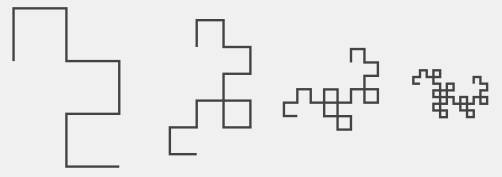
Order 3
(3 folds)
Order 4
(4 folds)
Order 5
(5 folds)
Order 6
(6 folds)
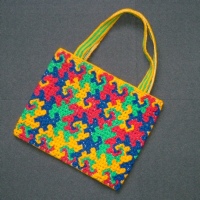
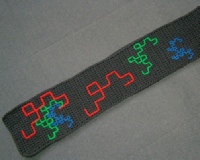
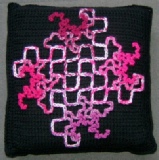
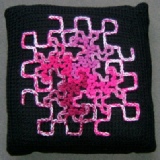
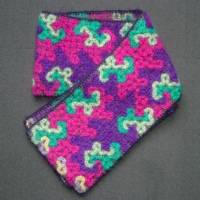
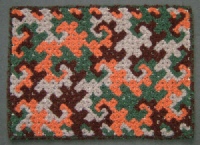
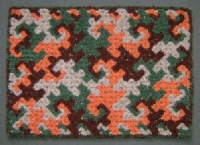
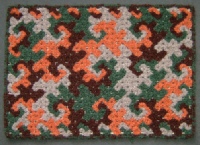
Three rugs, worked on rug canvas, each with a different arrangement of dragons.
These three designs are slightly different as they use the dragons shown in the diagrams at the top of the page. The sections of the dragons halve in length after each folding. The other designs all have dragons of different sizes but with all sections the same length.
The following publications are available individually or in a combined booklet called Here Be Dragons:
Scaled Down -
Scaled Up -
Dragonometry -
No pattern available
For the Chinese, 2000 had been the Year of the Dragon. For us 2001 was Dragon Curve Year.
The concept is so simple but the potential is amazing. Take a long strip of paper and fold it in half. You get a strip of paper with a fold in it! Refold the paper then fold it in half again. When you look inside you have two folds going in one direction and one fold going the other way. Refold and fold in half again and, when you unfold, you get even more folds, some going one way, some the other.
Unfold the strip and make a firm crease along each of the fold lines, taking care to maintain the correct direction for the fold. Stand the strip on its edge, with each fold forming a 90 degree angle, and look down on it. You will see an intricate pattern of squares, and twists and turns. The strips get the name of Dragon Curves because, after a few folds, they start to take on the appearance of a dragon with large head, legs and tail.
Keep a record of where the folds occur after each folding and it becomes obvious that a pattern is being formed. It becomes possible to predict what will happen with the next folding. In real life, the strip of paper can only be folded about six times before it gets too thick to bend. Mathematically, you can go on folding the strip as many times as you want.
The patterns formed by the folded strips are space-
Dragons can be arranged in many different ways to create interesting designs. Two dragons joined head-
Dragons interlock to cover the surface, when they are placed tail-
When we first discovered these curves, Steve spent his time drawing dragons, using various computer programs to make the task a little easier. Ben ventured into the deeper realms of changing the angles of the folds in the strip. This is almost impossible in a real-
The design for Scaled Up was a combined effort. It used dragons of nine different sizes in four basic colours -
We made scarves and rug and bags and anything else we could think off, with various combinations of dragons. The afghans went into a booklet entitled Scaled Up, the smaller items became Scaled Down. Mainly for our interest, and to remember what we had discovered, we wrote another booklet, Dragonometry, which was purely about the mathematics involved. Much to our surprise we sell as many copies of that booklet as the others, even to knitting and craft groups. The three booklets are available together as Here Be Dragons.
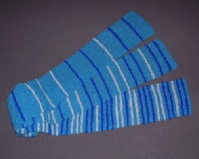
We went on to make another afghan in just four colours – red, black, silver grey and dark grey – with no regard for the different orders of dragons. We also went on to represent the sequences of folds in the strips of paper. First came a series of three scarves, named Corrugated Comforters, with stripes showing where the folds would be in the paper. Inwards folds were one colour, outwards folds another. Each scarf represented a different number of folds. All have the magical property that when you fold them in half again and again, the colours alternate as the stripes pile up on top of each other. We weren’t satisfied with three strips so the wall hanging Chromatic Scale showed the folds of seven different strips, beginning with the strip with just one fold.
| Introduction |
| Photos |
| Penrose Table |
| Needle Gauges |
| Tribute |
| Little Yellow Duck Project |
| Outside our house |
| Inside our house |
| New Photos 2011 |
| Dialysis photos |
| Other tributes |
| Maths & Puzzles |
| Puppets |
| Sum Wear |
| Toilet Roll Covers |
| Jewellery Dolls |
| Cushy Numbers |
| Pillows of Wisdom |
| Flexagon Cushions |
| Other Cushions |
| Spirals |
| Sweaters - Introduction |
| Hats |
| Scarves & Shawls |
| Crochet Möbius |
| Mathemagical Mittens |
| Mathematical Slippers |
| Simply Circles |
| Roman Mosaics |
| Woolly Thoughts Sweaters |
| Second Thoughts Sweaters |
| More Second Thoughts Sweaters |
| Waistcoats |
| Baby Jackets |
| Irrationals |
| Optical Illusions |
| Hyperbolic Hats |
| Octohats |
| Klein Bottle Hats |
| Mufflermatics |
| The Imitation Game |
| To Bias Or Not To Bias |
| Mostly Holes |
| Enwrapture |
| Maelstrom |
| Windmills Poncho |
| Cats |
| Dogs |
| Sheep |
| Eggsentricities |
| On a Roll |
| Snakes |
| The Sequel |
| Cushion Conglomeration Caper |
| Where to find us |
| Workshops |
| Afghans for schools |
| Group projects |
| Illusion Knitting Tutorials |
| Photos & Comments |
| Want a workshop? |
| South Tynedale |
| Tregarth |
| St Alban's |
| West Jesmond |
| St Oswald's |
| Beckermet |
| Earth School |
| Other schools |
| Cheshire WI |
| East Yorkshire WI |
| Beds Alzheimers Soc |